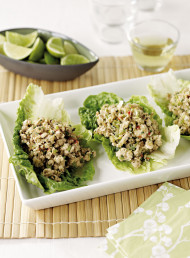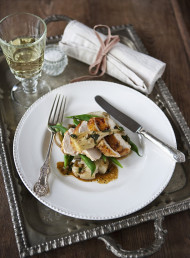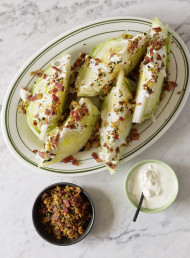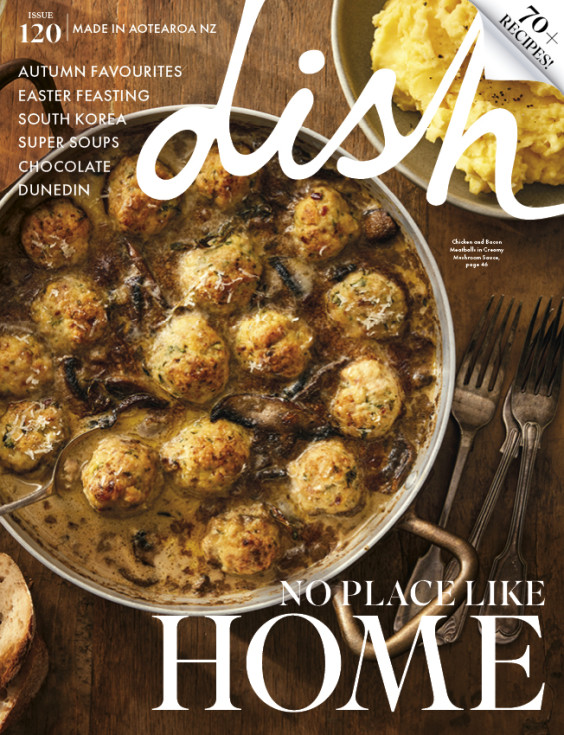The renaissance of verjuice as a serious ingredient is synonymous with the Barossa, as this is where Maggie Beer first made and used it. This dish is a fabulous combination of crisp iceberg lettuce, creamy aioli and tart olives, anchovies and capers. Serve it without the chicken as a great salad accompaniment. It is inspired by a dish on the menu at The Pot, an excellent French bistro in Adelaide.
Serves: 4–6
INGREDIENTS
3 boneless chicken breasts
olive oil
sea salt and freshly ground pepper
1⁄2 cup verjuice
Verjuice aioli*
1 egg
1 egg yolk
1 teaspoon Dijon mustard
2 cloves garlic, crushed
1 teaspoon dried tarragon
1⁄4 cup verjuice
3⁄4 cup vegetable oil
1⁄4 cup olive oil
Salad
3 eggs, soft boiled
1 firm iceberg lettuce
2 tablespoons capers
6-8 good anchovies
1⁄2 cup black olives, pitted
2 tablespoons roughly chopped flat-leaf parsley
METHOD
Aioli: Put the egg, egg yolk, mustard, garlic, tarragon and verjuice in a food processor and combine. With the motor running, slowly drizzle in the combined oils to make a thick emulsion. Season well. Add more verjuice if required to give a pouring consistency. Refrigerate until required.
Chicken: Slice the chicken breast horizontally, to give two even-sized pieces. Season. Heat a little olive oil in a sauté pan and cook both sides until cooked through. Remove to a plate. Add the verjuice and boil until reduced to a syrupy glaze. Return the chicken to the pan and turn to coat. Set aside to cool in the pan juices.
To assemble: Cut the lettuce through the root, into 6 wedges. Arrange on a serving platter.
Slice the chicken thinly against the grain and toss with the pan juices. Arrange on the platter amongst the lettuce, along with the eggs. Drizzle everything with aioli and scatter over the capers, anchovies, olives and flat-leaf parsley. Serve the remaining dressing separately.
Verjuice: in the 14th and 15th centuries French cooks used this juice made from unripe grapes. It has the tartness of lemon and the acidity of vinegar, but without the harshness of either. It marries particularly well with nut oils. Use it to deglaze pans, make vinaigrettes, or poach fruit in a syrup made from equal parts verjuice and sugar. Use white wine vinegar as an alternative in vinaigrettes or white wine for sauces or sweet applications. Verjuice is available from specialty food stores.
*Or substitute 1 cup of good quality bought aioli. Stir in 1 teaspoon of dried tarragon.
latest issue:
Issue #120
As the days become shorter, and the nights cooler, the latest issue is perfectly timed to deliver delicious autumn dishes. From recipes using fresh seasonal produce such as feijoas and apples, to spectacular soothing soups and super-quick after-work meals in our Food Fast section, we’ve got you covered. With Easter on the horizon, we feature recipes that will see you through breakfast, lunch and dinner over a leisurely weekend holiday, and whip up chocolatey baking treats sure to please. We round up delicious dinners for two and showcase a hot new Korean cookbook before heading south to Dunedin to check out all that’s new in food and dining.The latest issue of dish is on sale NOW at all good bookstores and supermarkets – don’t miss it!








